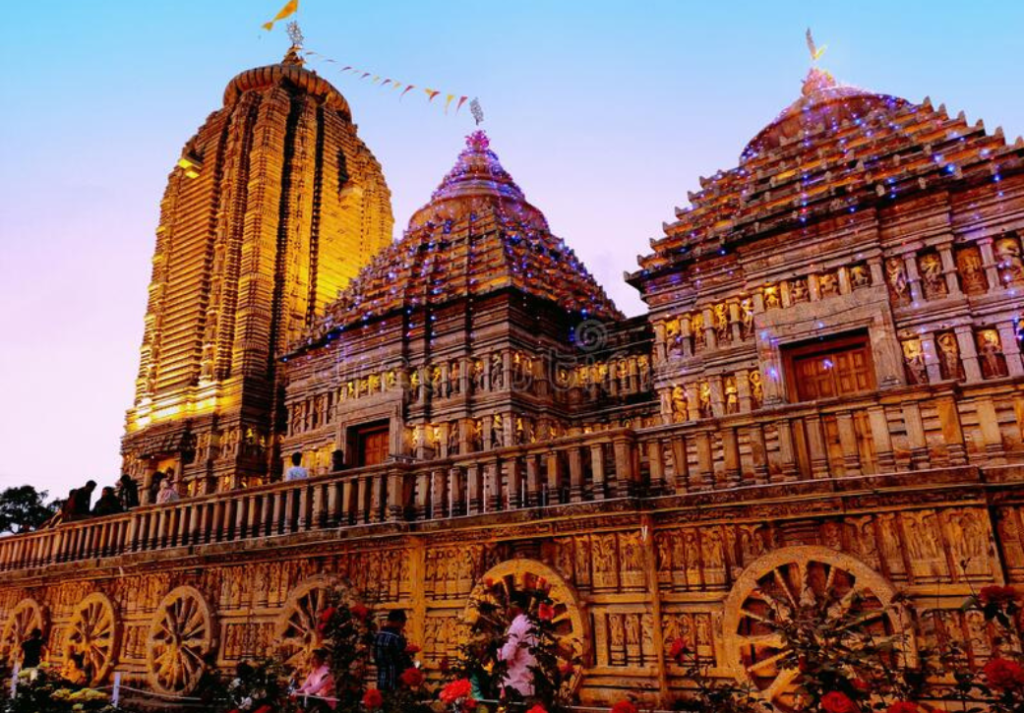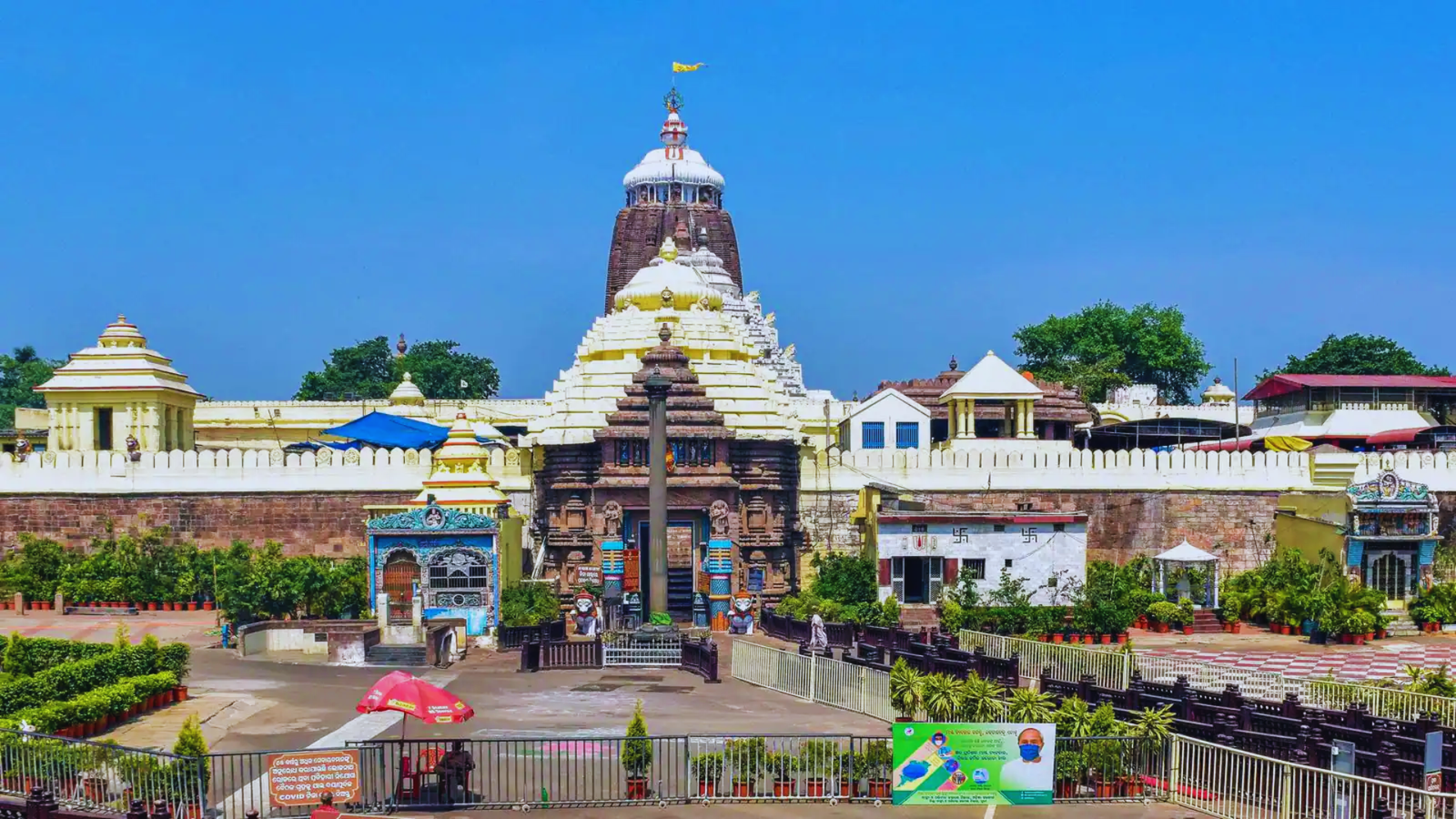eastern coast of India in the vibrant state of Odisha, the Jagannath Temple stands as a testament to centuries of history, spirituality, and grandeur. Dedicated to Jagannath, a revered form of Vishnu in Hinduism, this sacred site has captivated pilgrims and enthusiasts alike with its rich traditions, annual chariot festival, and enigmatic origins.
Historical Enigma: The Divine Evolution

The roots of the Jagannath Temple trace back to the visionary King Indradyumna of Avanti, who erected the main temple in Puri. Reconstructed over centuries, the present temple, initiated by Anantavarman Chodaganga, serves as a cultural treasure trove. Although rumors swirl about its origin, solid evidence remains elusive. The temple proudly holds its place among the 108 Abhimana Kshethram of the Vaishnavite tradition.
Nabakalevara

Nabakalevara, also known as Nabakalevara, is a sacred ritual deeply connected with Jagannath Temple. This ritual occurs every 8, 12, or 19 years, specifically when one lunar month of Ashadha is succeeded by another lunar month of Ashadha. Translated as “New Body,” this ceremonial practice involves the installation of new images in the Jagannath Temple and the burial of the old images at the Koili Vaikuntha temple.
Chariot Extravaganza: Ratha Yatra Unleashed

What sets Jagannath Temple apart is its spectacular annual Ratha Yatra, a chariot festival where colossal, ornately adorned temple cars carry the principal deities through the bustling streets. Bhil Sabar tribal priests, along with priests from diverse communities, conduct the worship. Unlike conventional stone icons, the image of Jagannath is wooden, replaced ceremoniously every 12 or 19 years.
Gupta Gundicha

vibrant celebration spanning 16 days from Krishna Dwitiya of the Ashwin month to Vijayadashami,[81] holds a special place in the temple’s festivities. According to the age-old tradition, Madhava, accompanied by Durga (referred to as Durgamadhaba), embarks on a ceremonial tour of the temple premises, a spectacle witnessed during the initial eight days. Subsequently, for the following eight days, the deities are carried outside the temple on a palanquin, making their way to the Narayani temple located in the Dola Mandapa lane. After receiving worship at this destination, they are ceremoniously brought back to the temple, marking the culmination of this unique celebration.
Snana Yatra

A mystical tradition unfolds each year as the primary deities—Jagannath, Balabhadra, Subhadra, and Sudarshan—conclude their sacred Snana Yatra on Jyeshtha Purnima. They retreat to a concealed altar, the enigmatic Anavasara Ghar, for the ensuing dark fortnight of Krishna Paksha. During this period, known as Anasara, devotees are denied the privilege of glimpsing the deities, who are said to be under the care of special servants, the Daitapatis, for 15 days, as they supposedly recover from a ceremonial bath-induced fever. As the deities reside in seclusion, devotees turn their reverence to the nearby temple of Alarnath at Brahmagiri, venerating an icon of a four-handed Vishnu as a symbolic manifestation of Jagannath. The awaited moment arrives on Navayouvana, the day before Ratha Yatra, when devotees rejoice in the first sighting of the deities, marking the end of this mystical interlude.”
Mythical Echoes: Krishna’s Heart and Divine Legends

Legend intertwines with the temple’s sanctity, linking it to Krishna’s heart and the periodic renewal of the deity. Vaishnava traditions find deep significance in the temple, with saints like Ramanujacharya and Chaitanya Mahaprabhu closely associated. The temple’s history resonates with the spiritual tapestry of Hinduism.
Cultural Nexus: Acharyas, Tribes, and Sikh Connections

Vaishnavite saints, including Adi Shankaracharya and Guru Nanak, left their imprints on the temple. The temple’s cultural legacy extends to tribal roots, with the Bhils and Sabar people adorning Jagannath as a symbol of Narayana. The Sikh guru, Guru Nanak, even visited the temple in 1506.
Security and Modernization: Safeguarding the Sacred Abode
With increased security measures ahead of festivals, including Ratha Yatra, the temple ensures the safety of millions of devotees. The recently introduced Shree Jagannath Heritage Corridor aims to enhance the overall pilgrim experience, providing unobstructed views of the temple’s majestic architecture.
Mysteries: A Glimpse into Divinity
As the Jagannath Temple continues to be a beacon of spiritual devotion, cultural heritage, and festive grandeur, each visit unveils new layers of its mystical allure. The rituals, legends, and traditions embedded within its walls beckon seekers from far and wide, making it a timeless marvel that stands proudly on India’s eastern shores.

